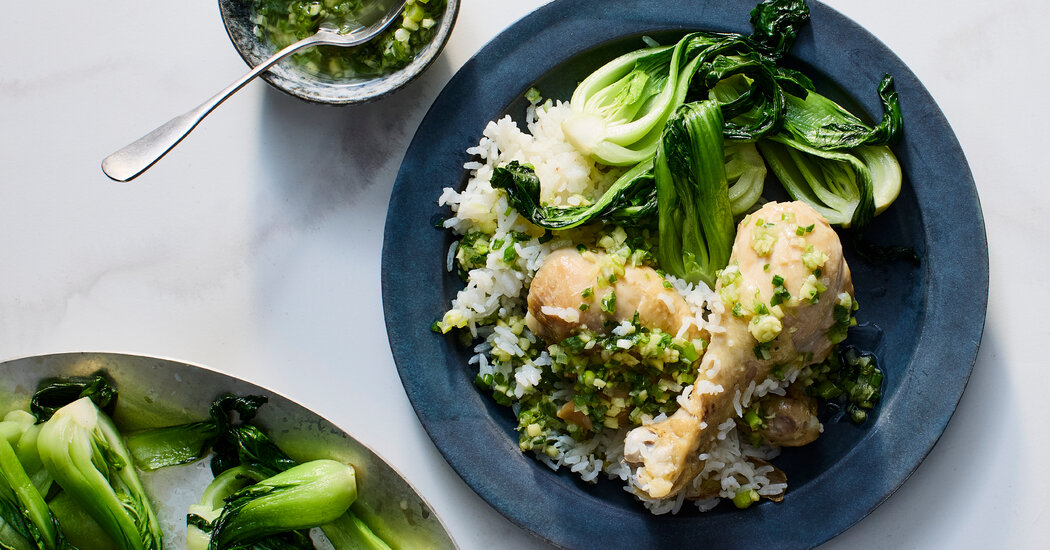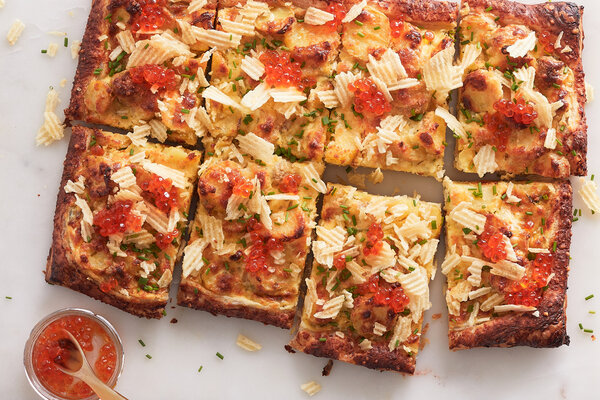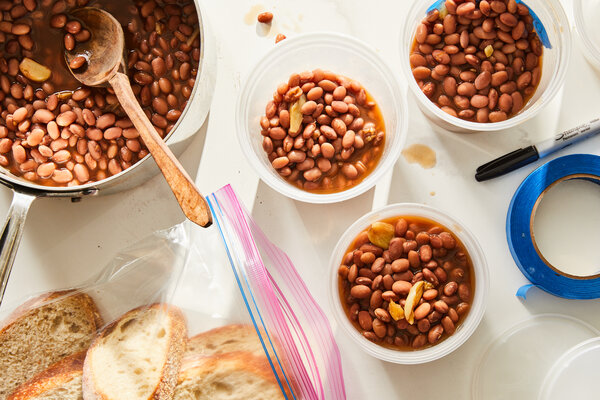From last Lunar New Year to this one, my life has gone through challenges and changes, and I wanted to shield my kids from all of it. It turns out that, despite my best efforts, they in some way perceive what’s happening, so I instead try to give them what stability I can. When that’s out of my control, I cook.
I want to believe that a favorite meal will make them feel like they’re home — even if we’re no longer circled around the same kitchen table we once shared. The problem is, we don’t have a tight little list of family dishes. Given my work as a recipe developer, their childhoods were filled with endless experiments: dozens and dozens of Christmas cookies, 17 versions of roast chicken, hundreds of dumplings. The dishes they remember the most clearly are the ones they tasted so many times in such a short span that they can no longer eat them. (Sorry about banana bread, kiddos.)
If pressed to name a meal that belonged to them — to us — it would be this shortcut chicken with ginger-scallion sauce. We used to call it Hainanese chicken rice back when I would prepare a version closer to the ones we ate when visiting family in Southern California. Like the original iterations in Hainan, Hong Kong, Singapore, Malaysia and elsewhere in Southeast Asia, the chicken poaches gently, ending up as silky slips of meat. That poaching broth, along with ginger and the bird’s fat, is then used to cook the rice, and it’s all served with ginger-scallion or ginger-garlic sauce, an inky sweet dark soy dip and scarlet chile sauce.
When my kids were toddlers, I would study cookbooks and pester the owner of Savoy Kitchen in Alhambra, Calif., to learn how to prepare a Cantonese take on Hainanese chicken rice similar to the restaurant dishes we enjoyed. I gripped the knobby drumstick ends of a whole chicken and dipped it into boiling water five times to ensure even cooking, then eased the bird into the pot. While it bathed in a bare simmer, I set the extra chicken fat and flappy skin I sliced off earlier in another pot and let the fat melt slowly over low heat.
Once the chicken cooked through, I plunged it into a bowl of ice water to firm its skin, then let it dry off on a cutting board. I stirred the rice into the melted fat, then cooked it in the chicken broth while minced ginger and scallions sizzled with hot oil. It became a special meal, especially for Lunar New Year, when whole chickens symbolize wholeness, unity and good luck.
Work, school, sports practices, music lessons and more made that meal impossible to prepare most nights, so I began to streamline it, first cooking chicken parts, then forgoing the rice for plain steamed rice. But anyone who has had great Hainanese chicken rice knows that the rice is the greater draw. The restaurants and food stands that specialize in this dish save leftover poaching broth to cook each subsequent batch so the rice plumps with shimmery richness. If gold was a taste, this would be it.
An engineering colleague alerted me to one-pot versions of Hainanese chicken rice swirling around social media, and I actually hooted with excitement at the prospect of trying it. It made so much sense. Why not infuse the rice with the meat’s richness by cooking the two together?
Given the short cooking time, bone-in dark meat is a must to add depth to the rice-simmering liquid, and tossing in the trimmings from the ginger prepped for the sauce imparts a sharp fragrance. Once the rice is stirred in, the meat is set over the grains so its fat melts into the pot as the chicken steams to tenderness.
While that pot cooks unattended, the ginger and scallions are finely chopped, and whichever greens are going with this meal — bok choy, napa cabbage or sturdy dark leaves like collards or kale — are sliced. Oil for the sauce is heated in a wok or skillet once the chicken rice is almost done and poured over the ginger and scallions to mellow their raw edge. The vegetables can then be stir-fried quickly in the sheen of hot oil remaining in the wok, and dinner is served. The choreography for this meal has evolved over the years, but I’d rather change a beloved dish than stop making it altogether for lack of time or energy.
When everything else in life is also changing, even an easier version of an old favorite still feels like home.







